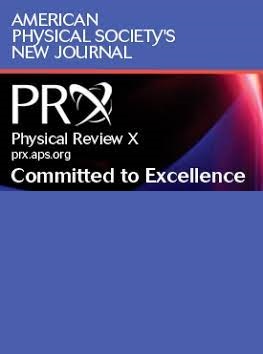Teleportation and Entanglement Swapping of Continuous Quantum Variables of Microwave Radiation
IF 15.7
1区 物理与天体物理
Q1 PHYSICS, MULTIDISCIPLINARY
引用次数: 0
Abstract
Quantum communication is needed to build powerful quantum computers and establish reliable quantum networks. At its basis lies the ability to generate and distribute entanglement to separate quantum systems, which can be used to run remote quantum operations on them or teleport quantum states from one system to another with the help of classical channels. To this end, it is useful to harness the resource of continuous-variable (CV) entanglement, since it can be efficiently and unconditionally produced by squeezing light in a nonlinear medium and can be easily manipulated, distributed, and measured using standard components. While various aspects of CV-based quantum communication have been successfully demonstrated in the optical domain, some key capabilities, such as entanglement swapping, have been lacking in the microwave domain. Here, we demonstrate three key elements of CV-based microwave quantum communication: (i) a Josephson mixer operating as a nondegenerate two-mode entangler with maximum measured logarithmic negativity EN=1.5, (ii) a quantum teleportation apparatus, capable of teleporting vacuum and coherent states with a maximum fidelity of 73%, which exceeds the 50% classical limit and is mainly limited by intermediate losses in the setup, and (iii) an entanglement-swapping system which generates entanglement between two remote noninteracting modes via entanglement-swapping operations applied to input vacuum and coherent states with maximum measured logarithmic negativity微波辐射连续量子变量的隐形传态和纠缠交换
构建强大的量子计算机和建立可靠的量子网络需要量子通信。它的基础是能够产生和分配纠缠到独立的量子系统,这可以用来在它们上运行远程量子操作或在经典通道的帮助下将量子态从一个系统传送到另一个系统。为此,利用连续变量(CV)纠缠资源是有用的,因为它可以通过在非线性介质中压缩光而有效无条件地产生,并且可以很容易地使用标准组件进行操作,分配和测量。虽然基于量子通信的各个方面已经在光学领域得到了成功的证明,但一些关键的能力,如纠缠交换,在微波领域还缺乏。在这里,我们展示了基于cv的微波量子通信的三个关键要素:(i)作为非简并双模纠缠器运行的约瑟夫森混频器,最大测量对数负性EN=1.5; (ii)量子隐形传态装置,能够传送真空和相干态,最大保真度为73%,超过了50%的经典极限,主要受到设置中的中间损耗的限制;(iii)纠缠交换系统,该系统通过对输入真空和相干态进行纠缠交换操作,最大测量对数负性EN=0.53,从而在两个远程非相互作用模式之间产生纠缠。这种基于非简并约瑟夫森混频器的硬件高效CV纠缠构建块可以在模块化量子计算、量子密码学和量子通信中实现广泛的应用。
本文章由计算机程序翻译,如有差异,请以英文原文为准。
求助全文
约1分钟内获得全文
求助全文
来源期刊

Physical Review X
PHYSICS, MULTIDISCIPLINARY-
CiteScore
24.60
自引率
1.60%
发文量
197
审稿时长
3 months
期刊介绍:
Physical Review X (PRX) stands as an exclusively online, fully open-access journal, emphasizing innovation, quality, and enduring impact in the scientific content it disseminates. Devoted to showcasing a curated selection of papers from pure, applied, and interdisciplinary physics, PRX aims to feature work with the potential to shape current and future research while leaving a lasting and profound impact in their respective fields. Encompassing the entire spectrum of physics subject areas, PRX places a special focus on groundbreaking interdisciplinary research with broad-reaching influence.
 求助内容:
求助内容: 应助结果提醒方式:
应助结果提醒方式:


